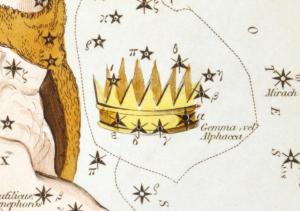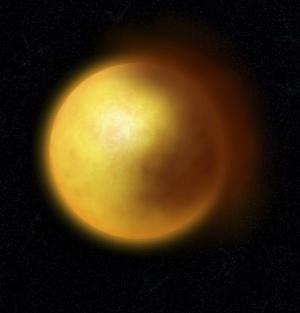Blog
Disappearing Act
8 June 2014
 Sidney Hall, Urania’s Mirror
Sidney Hall, Urania’s MirrorR Coronae Borealis is a dim star in the Northern Crown constellation. It is a yellow supergiant about 6,000 light years away. Normally it is a 6th magnitude star, just on the edge of visibility with the naked eye under a dark, clear sky. But in 2007 the star quickly faded from view, dimming to a magnitude 15 star by 2009. Magnitude is a logarithmic scale, so this is a huge difference in brightness. The star was nearly 4,000 times brighter in 2007 than 2009. Just how a star could fade so drastically in such a short time is a bit of a mystery.
 Gary Poyner
Gary PoynerOne of the unusual aspects about R Coronae Borealis (RCB) and other RCB-type stars is that they have more helium than hydrogen. Most stars have more hydrogen than helium, since hydrogen is more abundant in the universe. One explanation for this is that they may be formed by a collision of white dwarf stars. If they are small white dwarfs, this could cause a kind of failed Type I supernova that reignites the fusion process to produce a yellow supergiant with little hydrogen. One fact in support of this model is that RCB stars also have an abundance of carbon and oxygen, which is the kind of thing you’d expect to see in white dwarfs.
 NASA/HST
NASA/HSTThe abundance of carbon could provide an explanation for the dramatic dimming of R Coronae Borealis. It seems that carbon in the upper atmosphere of the star can condense to form a kind of soot, which blocks much of the visible light from the star. While the soot would absorb visible light, this would also heat the soot, causing it to emit light in the infrared.
This agrees with what we observe. When the visible magnitude of R Coronae Borealis dimmed, it did not dim significantly at infrared wavelengths. So it is not the case that the star somehow cooled significantly or decreased in size. Dimming in one wavelength range but not another is what you would expect when light is being absorbed by something in front of the star.
Just how this stellar soot can condense around the star, and how it stays condensed over months and even years is a mystery.